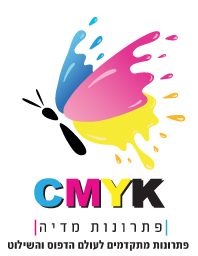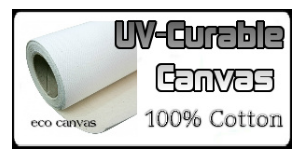Large Format Printing UV
Inkjet printing is a type of computer printing that creates a digital image by propelling droplets of ink
onto paper, plastic or other substrates. Inkjet printers are the most common type of printer, ranging from
inexpensive consumer models to a very large professional machines that can cost thousands of dollars, or more
Until a few years ago, the main benefits of dye-based ink was wider color gamut and lower cost , while its disadvantages were that it was water soluble single drop of water can ruin the printing and prints will
disappear faster. Pigment inks, however, lasts longer and more resistant to water , but was less color depth
and were more expensive
Today , however, there is little difference between color and pigment-based and solvent-based inks, with a slight advantage going pigmented inks . Continuous improvements in the formulation of the ink related
disadvantages of both types , and the current generation inks are made by manufacturers of well-known brands are usually claimed fade resistans for life when used with the recommended paper
In general, pigmented inks marketed to professional users , while solvent inks with lower-cost markets for amateurs. Black and white photographers tend to prefer pigmented inks . However, casual look on printed material will reveal only small differences that may be assessed only by professionals and serious
photographers
these inks consist mainly of acrylic monomers with an initiator .package
UV-curable inks After printing, the ink is cured by exposure to strong UV-light. Ink is exposed to UV radiation where a chemical reaction takes place where the photo-initiators cause the ink components to cross-link into a solid. Typically a shuttered mercury-vapor lamp is on either side of the print head, and produces a great amount of heat to complete the curing process (this lamp is used for free radical UV ink, which is what the majority of flatbed inkjet systems use). UV inks do not evaporate, but rather cure or set as a result from this chemical reaction. No material is evaporated or removed, which means about 100% of the delivered volume is used to provide coloration. This reaction happens very quickly, which leads to instant drying that results in a completely cured graphic in a matter of seconds. This also allows for a very fast print process. As a result of this instant chemical reaction no solvents penetrate the substrate once it comes off the printer, which allows for high quality prints. The advantage of UV-curable inks is that they "dry" as soon as they are cured, they can be applied to a wide range of uncoated substrates, and they produce a very robust image. Disadvantages are that they are expensive, require expensive curing modules in the printer, and the cured ink has a significant volume and so gives a slight relief on the surface. Though improvements are being made in the technology, UV-curable inks, because of their volume, are somewhat susceptible to cracking if applied to a flexible substrate. As such, they are often used in large "flatbed" printers, which print directly to rigid substrates such as plastic, wood or aluminium where flexibility is not a concern



